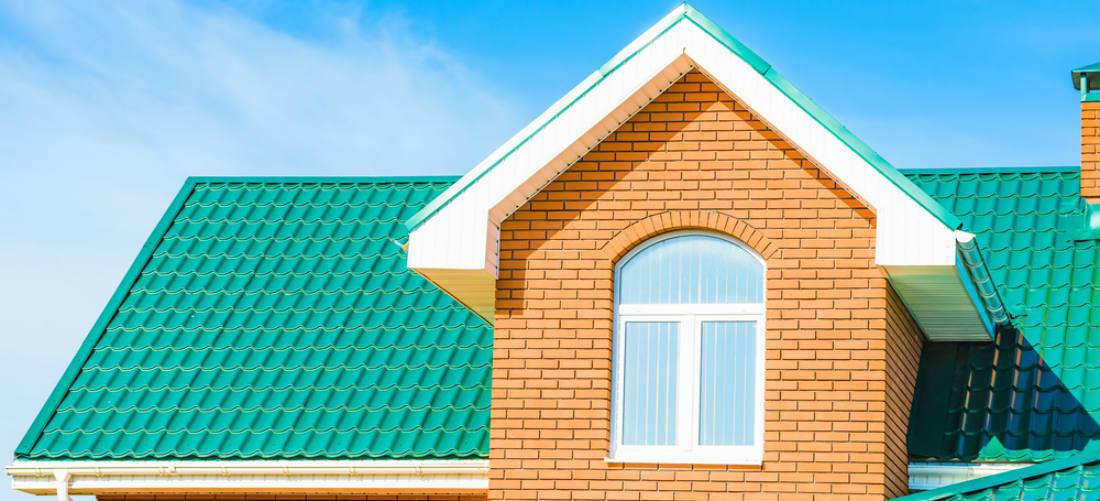Take into consideration not only costs, but also your home's curbside appeal when comparing metal roofing vs traditional tile roofing.
The residential roofing material used on your home makes a large difference in the protection offered to your roof decking and structure against moisture delivered by rain and snow. A direct comparison of metal roofing vs. traditional tile roofing can provide you with the information needed to make a choice between two of the more common types on the market.

Metal roofing
Metal roofing typically consists of cut metal panels that are installed with seams between each to direct water or dirt off of the roof. Metal roofing is used on slanted roofs to keep the water or dirt from collecting on the panels.
Differing panel materials are used, from untreated metal paneling, which will cost around $100 a square for installation, to coated steel or copper that can cost as much as $600 per square foot. Visibly, metal roofing can be made in differing textures and styles, often resembling wood shake, shingles or slate or clay tiles.
A metal roof is highly durable and can withstand heavy snow loads, damaging hailstorms and even fire. The panels are nearly maintenance free, requiring only that missing panels be replaced after heavy storms. You can also install metal roofing over existing roofing materials, removing the need to tear off and dispose of the old roofing materials before installation.
Due to its durability, many metal roofs have a roofing warranty of up to 50 years. Metal roofs may also lead to lower insurance rates, with discounts of up to 35 percent offered by many insurers.

Traditional tile roofing
Traditional tile roofing generally refers to clay or concrete tiles. As with metal roofing, a traditional tile roof is highly durable and requires little maintenance beyond the occasional roof repair consisting of the replacement of missing or damaged tiles.
Traditional tiles provide an insulative layer above your roof and can be highly reflective to increase energy efficiency and save you money on cooling the home during the summer. The tiles are also fireproof, which can prevent the rapid spread of a fire throughout the home, extending the time available for firefighters to fight a blaze.
Like metal roofing, traditional tile roofs can mimic the appearance of other roofing types, including shingle roofs, wood shake and slate tiles. One of the largest downsides to using traditional roofing is its weight. Because the clay or concrete tiles are so heavy, the structure of the roof must be designed specifically to support the tiles. For an existing homeowner looking to replace a roof with traditional tiles, this can raise roofing prices slightly, requiring that the existing structure be modified.
Roof tiles may also be broken when walked over. The materials used to construct the tiles are also expensive with clay tiles running as high as $500 per square foot.
The total roofing cost can be determined through estimates provided by roofers. A roofing estimate will not only include the cost of the materials but also the cost of underlayment and labor. Roofers may be found through a search of the available listings at QualitySmith.
Comparing metal roofing vs. traditional tile roofing can give you some idea of the differences between the types. Whichever you choose, however, it's sure to raise the value of your home, not only through the added protection, but also through a rise in the home's curbside appeal.













Write a Comment